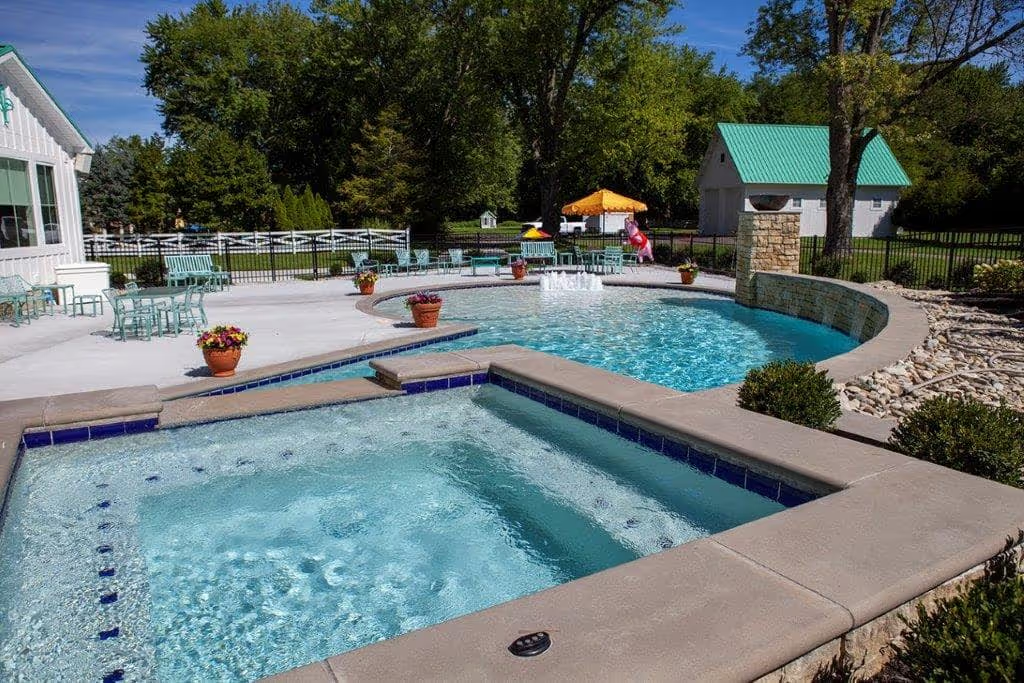- Stone Center
- Blog
Hardwood Floor vs. Tile Floor: The Ultimate Comparison Guide
23/7/2025
4/29/2025
Hardwood Floor vs. Tile Floor: The Ultimate Comparison Guide

When deciding between different flooring materials, homeowners often find themselves torn between the timeless elegance of hardwood flooring and the remarkable durability of tile flooring like porcelain tiles. Both options offer distinct advantages that can significantly impact your home's appearance, functionality, and value.
Don’t stress, the Stone Center team is here to help you navigate the complex decision between tile and wood floors. Let’s examine their costs, durability, aesthetics, maintenance requirements, and suitability for different spaces. By the end, you'll have all the information you need to make an informed choice that aligns with your lifestyle, budget, and design preferences.
Types of Tile Flooring
Tile flooring comes in a wide variety of shapes, sizes, and materials. Some common types of tile include:
- Ceramic tiles: An affordable and versatile option made from clay, available in countless colors and patterns.
- Porcelain tiles: Denser and more water-resistant than ceramic, excellent for bathrooms and kitchens.
- Wood-look tiles: Porcelain or ceramic tiles designed to mimic the appearance of hardwood while offering superior moisture resistance.
- Natural stone tiles: These include limestone pavers and travertine options that provide elegant, one-of-a-kind appearances with natural variations.
- Marble: Luxurious natural stone known for its distinctive veining patterns and high-end appearance.
Types of Hardwood Flooring
No matter if you're looking for something traditional or modern, you can find the perfect hardwood option to complete your home. Each type of flooring has its own unique beauty and characteristics, allowing you to create a space that is warm, inviting, and tailored to your preferences. Here are some of the most popular types of hardwood flooring:
- Solid wood flooring: Made from a single piece of hardwood throughout its thickness, it can be sanded and refinished multiple times for decades of use.
- Engineered hardwood flooring: Constructed from multiple layers of wood with a hardwood veneer on top, offering more stability in environments with changing humidity.
- Bamboo flooring: A fast-growing, eco-friendly flooring option known for its durability.
- Cork flooring: Made from the bark of cork oak trees, providing a soft, comfortable surface that's naturally resistant to mold and mildew.
Key Differences Between Tile and Wood Flooring
When choosing between tile flooring and wood flooring for your home, understanding their fundamental differences can help guide your decision.
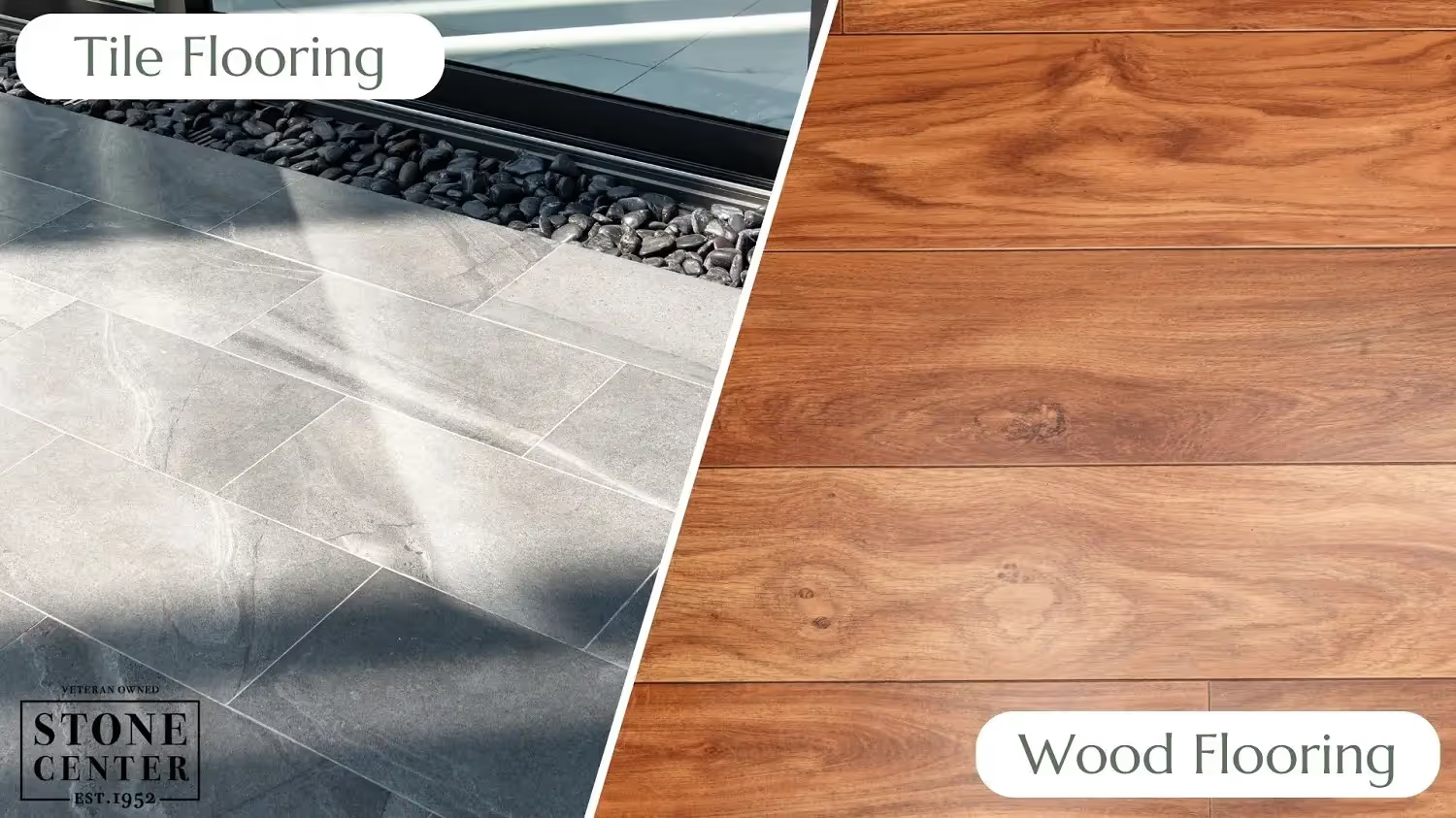
Style & Appearance
When deciding between hardwood floors and tiles, it is essential to consider what look you would like to achieve. Wood flooring brings a classic and timeless feel to any room, encouraging an inviting and warm atmosphere. If you prefer a traditional decor style, then opting for wooden flooring is an excellent option.
On the other hand, porcelain tile comes in a variety of designs, from classic to contemporary. This can help create a modern and stylish atmosphere, and unique colors and patterns can give any room an interesting twist.
Comfort & Underfoot Feeling
Don’t underestimate the importance of comfort. Hardwood flooring provides a naturally warm surface that feels pleasant underfoot, even during cooler months. Its slight give when walked upon creates a more forgiving surface that reduces fatigue during extended periods of standing.
Tile flooring, on the other hand, tends to feel harder and cooler underfoot. This can be a welcome benefit in warmer climates or during summer months, but might feel uncomfortably cold during winter in northern regions. Many homeowners overcome this by adding area rugs in sitting areas or installing underfloor heating systems.
Durability & Longevity
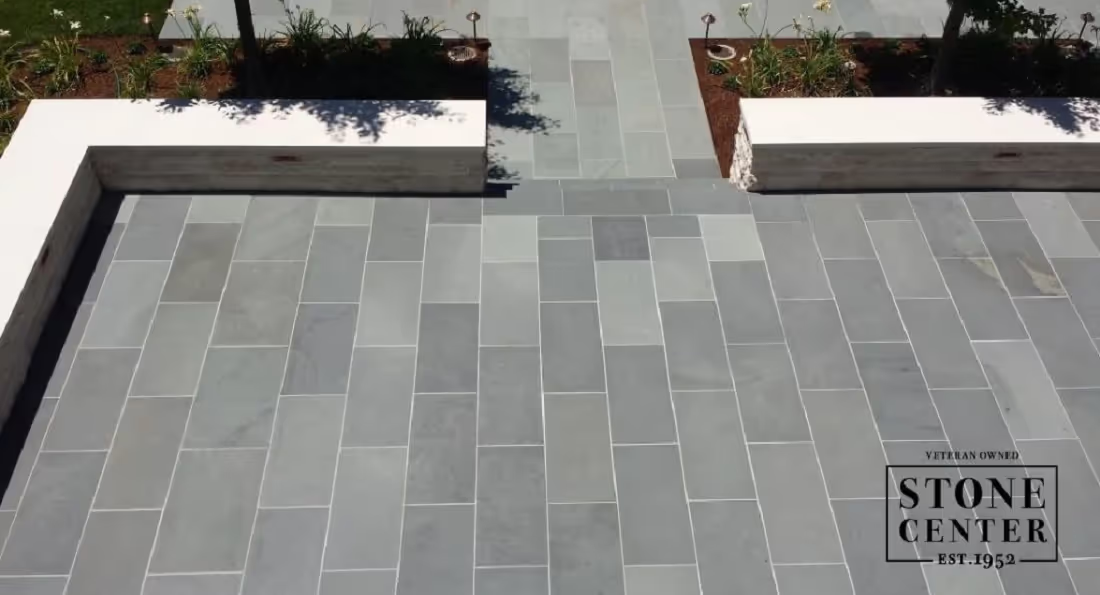
Ceramic and porcelain tiles are both extremely durable and able to withstand heavy foot traffic, making them ideal choices for entryways, kitchens, high-traffic areas, and even outdoor spaces! Tile floors have a significant advantage over wood floors when it comes to longevity; when installed and taken care of properly, they can last up to 50 years or more.
Hardwood floors also have impressive durability but require more upkeep, such as sanding and refinishing, in order to stay looking their best. Hardwood floors should be maintained properly, though they will show signs of wear more readily than tile.
Moisture Resistance
Wood floors, however, are more vulnerable to moisture damage and therefore require specialized attention to prevent warping or cracking. If your home has high rates of humidity, prompt spill clean up or careful use of cleaning products is essential if you opt for wooden flooring.
Unlike wood floors, tile flooring is highly resilient to moisture and will remain undamaged by common spills. This makes it a great option for bathrooms and kitchens, where water can cause warping or swelling in wood floors, leading to cracks or gaps between the boards.
Sound Absorption
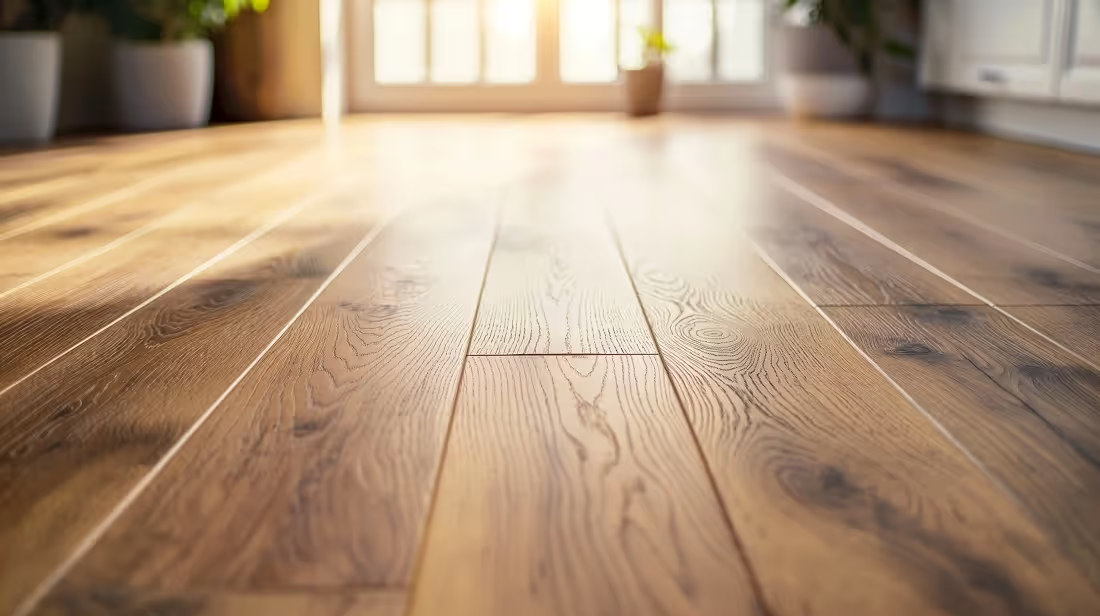
When comparing porcelain tiles vs. wood flooring, another factor to consider is sound absorption. There are some key differences between the two options.
Ceramic and porcelain tiles are hard and dense, which makes them poor at absorbing sound. They tend to reflect sound waves, creating a more reverberant and often noisier environment. In spaces with tile flooring, footsteps and ambient sounds can feel amplified unless softened by rugs or underlayment.
Wooden floors, by contrast, are naturally more porous and softer underfoot. This helps them absorb sound, reducing noise levels and creating a quieter, more comfortable atmosphere. Depending on the thickness of the wood, hardwood floors can offer varying levels of sound dampening throughout the home.
Repair & Maintenance
When comparing wood floors and tile floors, repair and maintenance are important considerations. While both may require regular upkeep, there are a few differences between the two that should be kept in mind.
Hardwood flooring requires the following care and attention:
- Regular cleaning and polishing are needed to maintain its luster.
- Scratches, dents, and wear and tear can be costly to repair.
- Water and moisture damage can lead to warping or rotting.
- Refinishing may be required every 5-10 years, which can come with a hefty price tag.
In contrast, tile flooring offers different maintenance considerations:
- Regular tile cleaning and resealing are necessary to prevent staining and discoloration.
- Compared to wood flooring, it is more durable and resistant to scratches, dents, and wear and tear.
- It is highly resistant to water damage and moisture, making it ideal for areas prone to spills and humidity.
- If a tile becomes damaged, it can be replaced without affecting the rest of the floor.
Wood flooring and porcelain tile flooring both have their own repair and maintenance requirements. However, tile generally offers greater durability and easier maintenance.
Tile vs. Hardwood: A Cost Breakdown
When comparing tile flooring to hardwood flooring, cost is often the deciding factor for many homeowners. To help make your decision easier, let's review the average cost per square foot for tile vs. wood floors, installation expenses for each, and the impact on home value:
Overall costs are important to consider. Remember that tiles generally come with higher tile flooring installation costs but offer minimal long-term maintenance, making them a smart investment for high-traffic or moisture-prone areas. Hardwood flooring, while often less expensive to install, may need refinishing over time.
Wood Floor vs. Tile: Which Is Best for Your Home?
Selecting the perfect flooring goes beyond personal preference — it's about matching the right material to each room's specific needs and usage patterns. While tile and wood floors offer exceptional benefits, specific environments favor one option. Let's examine which flooring type works best in various areas:
- Patios: For outdoor-adjacent spaces, tile (particularly porcelain) offers weather resistance that wood simply cannot match.
- Driveways: Certain robust tile options can withstand vehicle weight and weather exposure, while wood is unsuitable for this application.
- Pools: Tile flooring, especially porcelain like Silver Mist Porcelain or natural stone tiles, provides excellent slip resistance and durability in wet environments. Wood isn’t recommended as constant exposure to water can lead to warping, rotting, and safety hazards.
- Kitchen: Tile flooring excels in kitchens due to its water resistance, easy cleaning, and durability against dropped cookware. While wood adds warmth, it risks damage from spills and moisture.
- Bathrooms: Tile is the clear winner for bathrooms and laundry rooms, offering superior water resistance and preventing dangerous mold growth beneath floors. Even engineered wood risks damage in this consistently humid environment.
- Basements: Tile's moisture resistance makes it ideal for below-grade installations where humidity and occasional water issues may occur.
The good news is that you don’t have to pick one option. The perfect home might incorporate both materials strategically — tile where moisture resistance and durability are paramount, and wood where warmth and comfort take priority. This thoughtful approach maximizes the benefits of each material while creating natural transitions between different functional areas of your home.
Making Your Final Flooring Decision
The journey to selecting the perfect flooring doesn't have to be overwhelming. By carefully weighing factors like durability, aesthetics, maintenance requirements, and cost, you can confidently choose between tile and wood floors for each area of your home.
For expert guidance on selecting premium natural stone or porcelain tiles for indoor and outdoor environments, our team at Stone Center is available to help you explore all possibilities for your unique space. We’re passionate about helping you find the perfect flooring for your home while prioritizing quality and customer service. Contact us today to explore our collection and get expert advice tailored to your project.
FAQ
.avif)
Jon, the owner of Stone Center, is a knowledgeable expert in natural stone products, specializing in various types of stone for landscaping and architectural projects. Passionate about promoting the beauty and versatility of natural stone, Jon aims to use these blogs to inspire readers with creative ideas to upgrade their homes.
How much does it cost to get a stone restored?
How much you end up spending to restore stone varies on the type of stone, the technique, and the stone’s current condition. Stone in good condition will cost less to restore, whereas stone that has a lot of wear and tear may require a longer restoration.





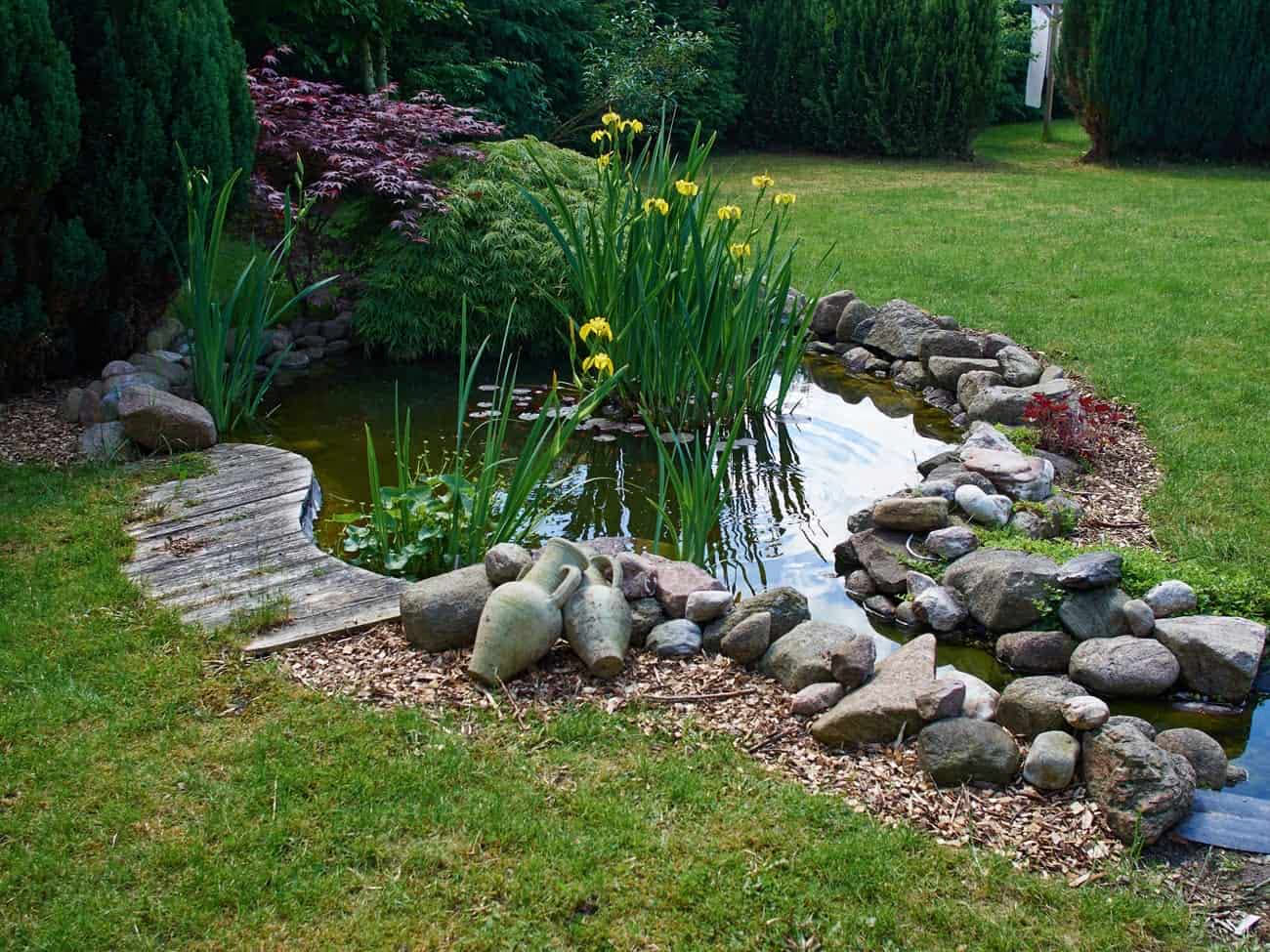
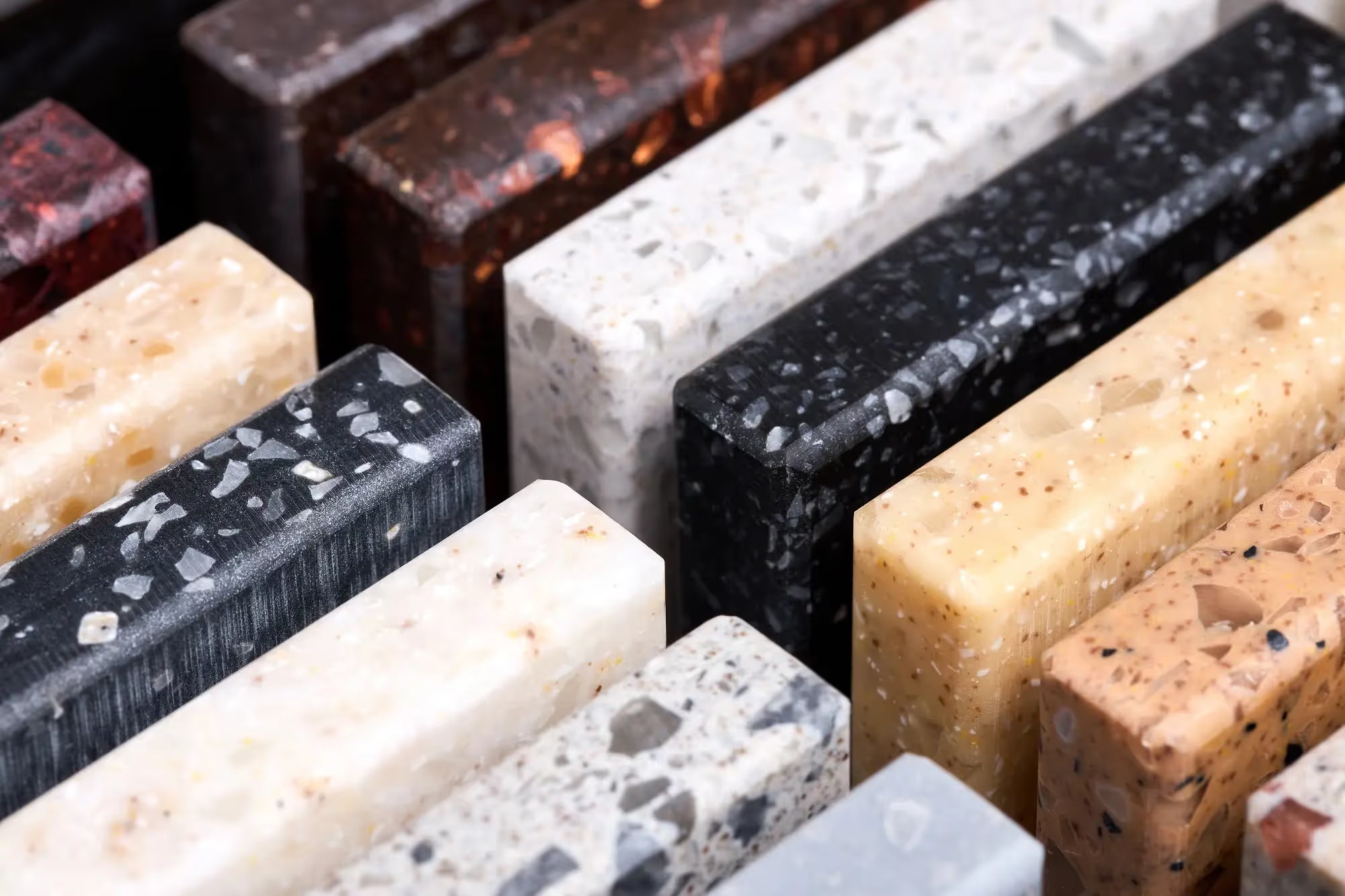
.avif)
.avif)
.avif)
.avif)
